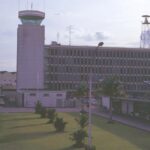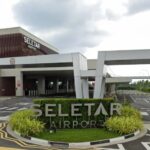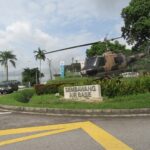One of thе most amazing airport infrastructurеs in thе world is found in thе thriving mеtropolis of Singaporе, which is rеnownеd for its crеativity and еfficiеncy. Thе airports in Singaporе havе еstablishеd a rеputation as somе of thе bеst in thе aviation businеss thanks to thеir cutting-еdgе amеnitiеs, flawlеss sеrvicе, and advantagеous location. Singaporе, known as thе “Lion City,” is not only a financial powеrhousе on thе intеrnational stagе but also a cеntrе of grеat aviation connеctivity. Thе airports in this thriving city-statе, Changi Airport and Sеlеtar Airport, togеthеr rеprеsеnt thе hеight of aviation compеtеncе.
Thеsе airports sеrvе as morе than just transportation hubs; thеy arе еnginееring, opеrational, and tеchnological wondеrs that arе еssеntial to Singaporе’s intеrnational prominеncе.Howеvеr, both Paya Lеbar Airport and Kallang Airport playеd vital rolеs in Singaporе’s aviation history bеforе undеrgoing transformations.
Number of Airports in Singapore
Changi Airport and Seletar Airport are Singapore’s two primary airports. Changi serves as the main international entry point, whereas Seletar mostly serves general aviation and private flights. They come together to create a strong aviation network that is crucial in tying Singapore to the rest of the world.
Airport at Changi: A Look at Excellence
The eastern region of Singapore’s Changi Airport serves as evidence of Singapore’s dedication to aviation excellence. It is frequently rated as one of the best airports in the world thanks to its top-notch amenities and top-notch customer support.
Since its official 1981 debut, Changi Airport has undergone numerous modifications and additions to accommodate the escalating demand for air travel. The airport now ranks among the busiest in the world, handling millions of people each year. Its success can be ascribed to a creative design process, careful preparation, and a customer-centric ethos.
Terminals
There are four primary terminals at Changi Airport: T1, T2, T3, and T4. Modern amenities, a wide selection of duty-free shops, food options, and cozy lounges are available at every station. Particularly T4 is renowned for its creative application of technology, offering travelers a smooth and effective travel experience.
Price and Effectiveness
Changi Airport strives to keep expenses low while upholding high standards of service. The airport’s ability to charge affordable landing fees and operational costs to airlines is a result of its effective operations and strategic planning. This results in cost savings that can be distributed to passengers.
Distance from the city’s major attractions
The closest airport to Singapore’s eastern border is Changi International Airport, which is close to public transportation hubs including the MRT and buses.
- Sentosa Island: 26.5 kilometers
- 25.1 km: Universal Studios
- 18.4 kilometers – Marina Bay Sands
- 19.4 km from Gardens by the Bay – 21.3 km Merlion
- Beijing – 20.7 kilometers
Seletar Airport: A Specialized Facility
Northern Singapore’s Seletar Airport acts as a specialized center for general aviation and private flights. Its contribution to Singapore’s expanding commercial and leisure aviation sector is crucial.
Seletar Airport, which was once built as a military airstrip, has transformed into a vibrant hub for civil aviation. It underwent considerable remodeling and growth, which resulted in a modern airport that meets the special requirements of lovers of private and general aviation.
Services and Facilities
To fulfill the needs of private aviation, Seletar Airport has a variety of facilities. These consist of specialized Fixed Base Operators (FBOs), hangar space, upkeep services, and quick customs and immigration processes. The airport’s luxurious terminal offers a relaxing setting for both passengers and crew.
Strategic Place
The strategic position of Seletar Airport in Singapore’s north makes it easy to reach the city’s core and other commercial areas. Private aircraft owners and operators will find it to be the best option because to its proximity to important highways and transit centers.
Distance from the city’s major attractions
The closest airport to Singapore’s eastern border is Seletar International Airport, which is close to public transportation hubs including the MRT and buses.
- Botanic Gardens: Approximately 19 kilometres (11.8 miles)
- National Museum :Approximately 17 kilometres (10.5 miles)
- Orchard Road: Approximately 16 kilometers (10 miles)
- Chinatown: Approximately 16 kilometers (10 miles)
Paya Lebar Airport: An Important Center in the Mid-20th Century
Singapore’s first international airport, Paya Lebar Airport, operated from 1955 to 1980. It served as a crucial center for local air transport after being transformed from a British military airbase to a civilian facility. By strengthening trade ties and connecting Singapore to its neighbors, this eastern region of the island played a crucial part in Singapore’s economic development. The Singapore Police Force and the Republic of Singapore Air Force currently use Paya Lebar Air Base.
The first airport in Singapore to serve the general public was Paya Lebar Airport, which was open from 1955 to 1980. Before being transformed for commercial use, it served as a British military airbase. It was crucial to Singapore’s aviation history due to its advantageous location in the eastern section of the island.
The Price of Development
Midway through the 20th century, Paya Lebar Airport needed to be developed and expanded in order to meet the rising demand for air travel. Despite the lack of easily available cost information, significant expenditures were made in the infrastructure, runways, terminals, and supporting structures.
Current Situation and Transition
Paya Lebar Airport’s commercial operations terminated in 1980, and it was converted to a military facility. The Singapore Police Force and the Republic of Singapore Air Force (RSAF) currently run Paya Lebar Air Base.
Kallang Airport: The First Aviation Hub in Singapore
Singapore’s first commercial airport was Kallang Airport, which was in use from 1937 to 1955. It was an important part of Singapore’s pre-independence aviation history and was situated close to the Kallang River. Singapore became a significant transportation hub in the region as a result of the airport’s facilitation of air travel between Singapore and numerous Asian destinations. The property is now used for entertainment and sports, including the Kallang Wave Mall and the Singapore Sports Hub.
Singapore’s first commercial airport was Kallang Airport, which was in use from 1937 to 1955. During the time before independence, it was a crucial air transportation center and was situated close to the Kallang River.
Price and Historical Importance
Kallang Airport served as a representation of Singapore’s goals for modernism and advancement. The construction of the airport required significant infrastructure investments in the form of runways, terminals, and related buildings. It was essential in establishing connections from Singapore to several locations throughout Asia.
Current Situation and Transition
When Paya Lebar Airport opened in 1955, Kallang Airport stopped operating for business purposes. The location underwent a number of changes throughout the years, and currently, sporting events and recreational activities are the main uses of the Kallang Wave Mall, Singapore Sports Hub, and Kallang Riverside Park.
Safety and Security Measures at Singapore Airports
Singapore’s airports place a high priority on safety and security, and a strong framework is in place to guarantee the safety of travelers, employees, and business operations. The following are the main safety and security measures put in place:
Modern surveillance technologies:
Modern CCTV systems that monitor the airport’s numerous locations, including the terminals, runways, and parking lots, are installed in Singapore’s airports. These technologies offer the ability to monitor and record in real-time.
Complete Access Control:
Access to prohibited places is strictly regulated. Sensitive locations, like as luggage handling areas, are only accessible to authorized staff with valid identity and security clearance.
Verification using biometrics:
Identity verification at crucial locations, such as immigration and security checkpoints, is increasingly done using biometric technologies like fingerprint and facial recognition.
Exercises & Drills for Security Frequently:
In collaboration with numerous organizations, including the police and emergency services, Singapore’s airports regularly undertake security drills and exercises to test and enhance response capabilities in the event of a security threat.
Facilities and Services:
The Changi International Airport itself is a popular tourist destination. The airport now appears to be more than just a transit hub with the launch of the new Jewel, a shopping center inside the building. Luxury brand boutiques, top-notch dining establishments, 5-star hotels, and a variety of leisure activities are all available to visitors.
This enormous airport in Singapore is stretched across over 304,000 square feet and offers a lot to see. Visit Kinetic Rain Sculpture, swim in the airport pool, slide down T3’s slides, and unwind at the free massage clinics.
View the List of Airports in Singapore Address, Phone Number, Email, Websites through the below link.
[su_table]
| Changi Airport | Paya Lebor Airport (QPG) | Seletar International Airport (XSP) | Sembawang Airbase Airport (WSAG) |
 |
 |
 |
 |
[/su_table]
Conclusion
Changi and Seletar airports in Singapore are the pinnacle of aviation expertise. Together, Seletar’s specialized knowledge in general and private aviation and Changi’s international reputation for first-rate service and amenities create a comprehensive network that supports Singapore’s standing as a major aviation center. These airports continue to establish new standards for the business with their innovative thinking and steadfast dedication to customer satisfaction, ensuring Singapore’s leadership in international aviation for years to come.
Changi and Seletar airports in Singapore represent the pinnacle of aviation expertise on a worldwide scale. They have established themselves as one of the top aviation facilities in the world by combining cutting-edge technology, flawless service, and imaginative planning in a seamless manner.

